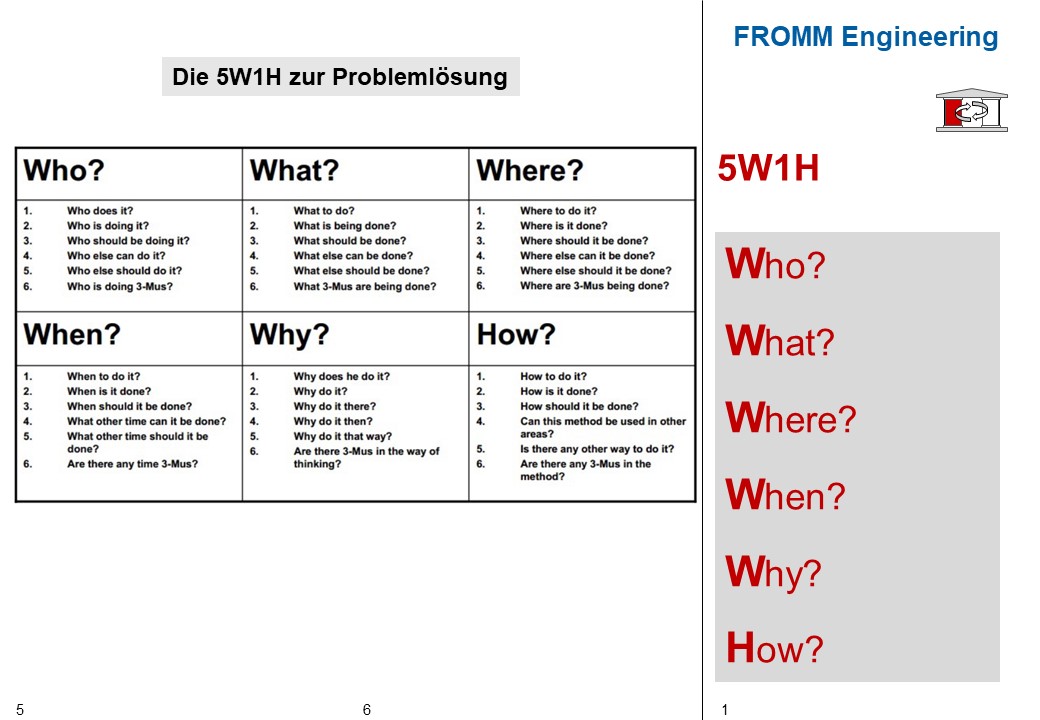5W1H

One of the most basic problem solving methods is the 5W1H method.
There are five W questions and one H question that help describe a problem and find a solution:
WHAT?
What is the problem? (What are the symptoms?)
WHERE?
Where does the problem occur? (or where did it come from?)
WHEN?
When does the problem occur? (or when was it created?)
WHY?
Why did the problem occur? (or why did it come about?)
WHO?
Who is affected (or who needs to be involved in the solution?)
(Which people, areas, departments, etc.?)
HOW?
What is the problem? (but also: how do you know that the problem is solved)
The question words can be integrated very flexibly into the most varied of question sets as required.
In this way you can react well enough to different situations. So it makes a lot of sense to vary the questions and “play” with them.
Sometimes there are enormous advantages if the question is turned negative, i.e. for example, "When does the problem NOT occur?" or "Who is NOT affected?"
Current information, workshops, zoom meetings and the latest training courses can be found in my LEARNWORLD.